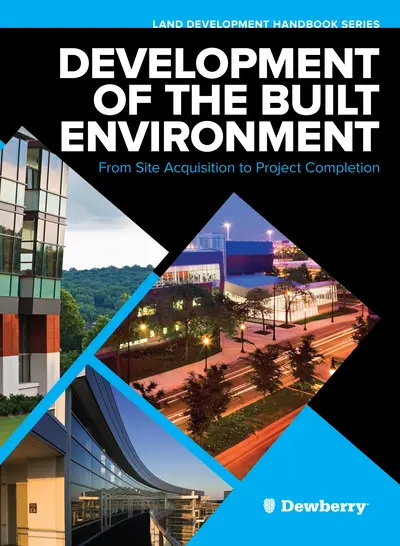My Account Details

ISBN10: 1260440737 | ISBN13: 9781260440737

* The estimated amount of time this product will be on the market is based on a number of factors, including faculty input to instructional design and the prior revision cycle and updates to academic research-which typically results in a revision cycle ranging from every two to four years for this product. Pricing subject to change at any time.
Instructor Information
Quick Actions (Only for Validated Instructor Accounts):
1.1. Development and Developers
1.2. The Development Team
1.3. Overview of the Development Process
Chapter 2: Creating the Built Environment
2.1. Overview of the Built Environment
2.2. Components of the Built Environment
2.3. Planning for the Built Environment
Chapter 3: Recognizing Opportunity
3.1. Types of Sites
3.2. Property Types
3.3. Key Considerations for Defining the Project
Chapter 4: Selecting and Controlling the Site
4.1. The Site Selection Process
4.2. “Back of the Envelope” Financial Analysis
4.3. Controlling the Site
Chapter 5: Due Diligence and Site Acquisition
5.1. Legal Considerations
5.2. Site-Based Due Diligence
5.3. Market and Financial Due Diligence
5.4. Site Acquisition
Chapter 6: Approvals, Construction, and Completion
6.1. Preconstruction
6.2. Construction
6.3. Completion
Chapter 7: Special Considerations for Public Sector Development
7.1. Key Differences Between Public and Private Projects
7.2. Types of Projects
7.3. Detailed Case Studies
Chapter 8: Case Study—National Harbor
8.1. Background
8.2. Project Timeline
8.3. Project Components and Costs
8.4. Project Challenges
Index
Need support? We're here to help - Get real-world support and resources every step of the way.